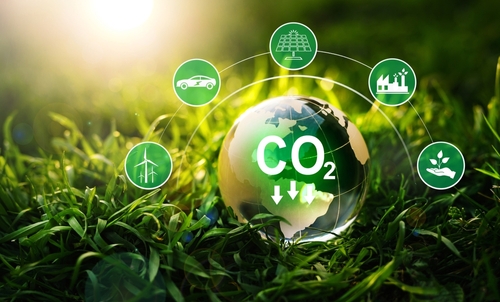
The latest data shows that Pennsylvania remained the top electricity export state and reached a new low for CO2 emissions from electricity generation in 2023, according to the state’s Independent Fiscal Office (IFO).
“In PA, from 2018 to 2023, the amount of CO2 emitted per unit of electricity produced declined by 19%,” tweeted Pennsylvania State Sen. Gene Yaw, who represents District 23, on X March 12. “So while most states are cutting CO2 simply by slashing generation and importing from other states, PA increased electric generation & reduced overall CO2 emissions.”
For 2023, the IFO says Pennsylvania net generation totaled 236 million megawatt hours (MWh), an increase of 9.6 percent from 2018, and only 8 percent less than the net generation of New York and Ohio combined.
The IFO — which provides revenue projections along with impartial and objective analysis of fiscal, economic and budgetary issues to assist Commonwealth residents and the General Assembly in their evaluation of policy decisions — on March 7 released its Pennsylvania Electricity Update, which cites data from the U.S. Energy Information Administration.
The fuel sources for Pennsylvania’s net generation in 2023 were 59 percent from natural gas, 5.4 percent from coal, 31.9 percent from nuclear, and 3.7 percent from other sources, says IFO, noting that Ohio was the only other regional state to record an increase in net electricity generation since 2018.
For 2023, Pennsylvania exported an estimated 83 million MWh of electricity, “notably higher (85 percent) than the second highest export state,” the IFO says.
“Despite generation growth since 2018, the IFO estimates that the Pennsylvania power sector continues to reduce both absolute and per unit CO2 emissions,” says the office, adding that estimated emissions for 2023 declined by 10.8 percent from the prior year, “the largest year-over-year decline for Pennsylvania on record since 1990.”
The office also said that Pennsylvania and Ohio were the only states to increase generation and reduce emissions, with the reduction in CO2 emissions largely due to the long-term trend decline in coal generation.
The Marcellus Shale Coalition pointed out in a March 13 blog that natural gas is reducing Pennsylvania’s power sector emissions at nearly twice the rate of reductions from the pandemic’s stunted economic activity.
And with Pennsylvania being one of two states to increase generation and reduce related emissions, the coalition said this proves that “more natural gas use for electric power leads to a more reliable and resilient power grid, accelerates decarbonization and air quality gains, and generates significant cost savings for energy users.”
Regarding electricity prices, IFO said that from the first quarter of 2021 to the fourth quarter of 2022, the Pennsylvania price increased by 33.8 percent compared to a 19.6 percent price increase nationwide.
“The weaker national increase was likely due to a more diverse generation mix: Pennsylvania uses more natural gas compared to the U.S. average,” the IFO said. “For 2023 Q4, the average Pennsylvania price was two cents (12 percent) higher. It is likely that prices will converge during 2024 if natural gas prices remain low.”